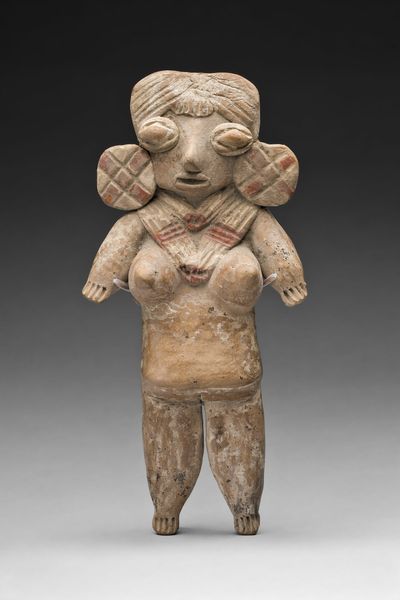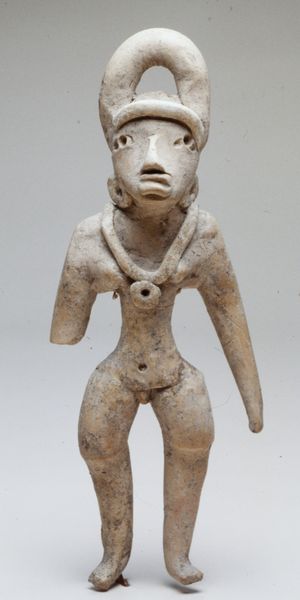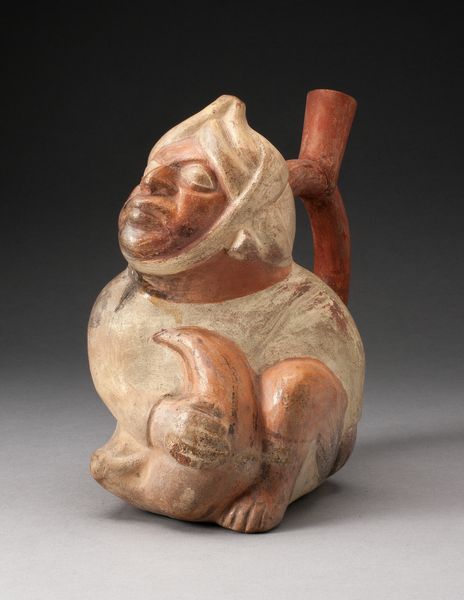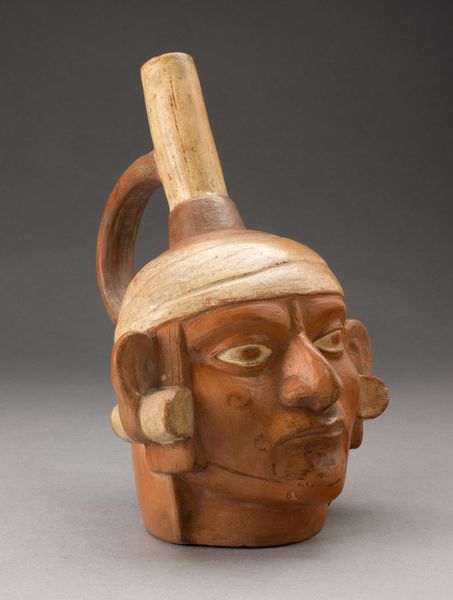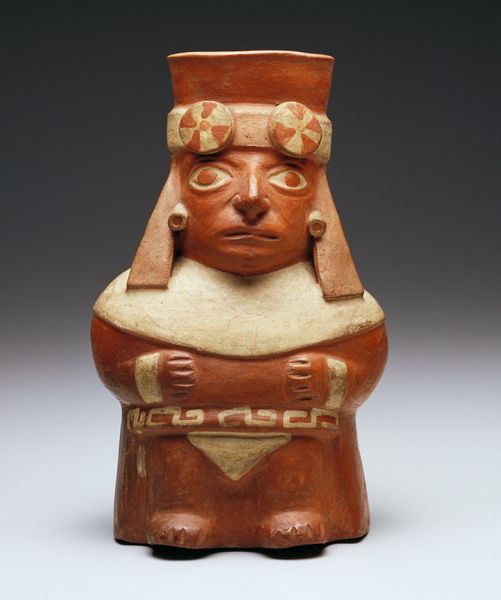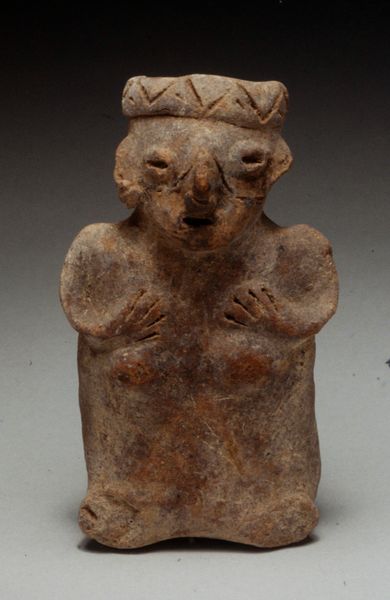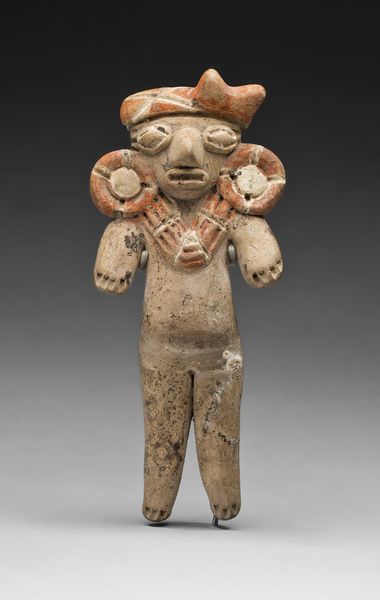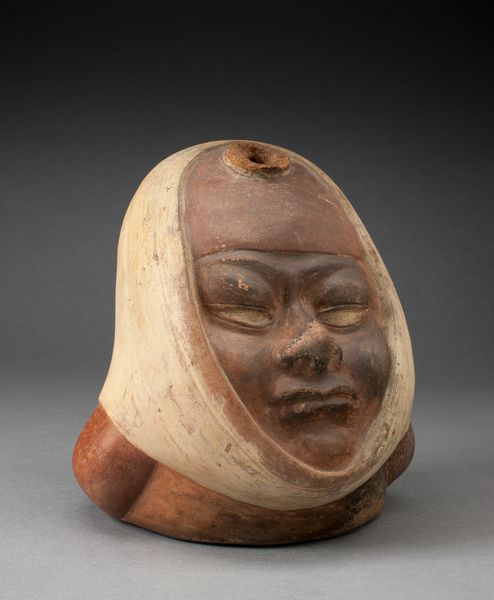
ceramic, sculpture, terracotta
#
portrait
#
sculpture
#
ceramic
#
sculpture
#
terracotta
#
indigenous-americas
Copyright: Public Domain
The Moche people crafted this vessel with great care in ancient Peru. Its striking form combines human-like features with the practical function of a container. The head is adorned with circular ear ornaments and a distinctive headdress, commanding our attention. The vessel's body exhibits horizontal lines, creating a segmented pattern. These lines, combined with the curvature of the form, give a structured yet organic feel. This fusion is fascinating. The Moche artist balances form and function, imbuing a utilitarian object with symbolic meaning. The choice of medium, likely fired clay, further grounds the vessel in its cultural and historical context. The vessel’s visual language provides insight into the worldview of the Moche civilization. The use of line and form in this piece creates a powerful tension between representation and abstraction. This is an example of how art serves as a vessel itself, carrying layers of meaning and cultural narrative across time.
Comments
minneapolisinstituteofart almost 2 years ago
⋮
Moche leaders subjected their prisoners of war to public humiliation, torture, and often sacrifice. Typically in Moche art, captured enemies are shown in the nude. But the artist who created this vessel chose to emphasize the prisoner’s high status by depicting him in full regalia. In addition to his stoic expression, the figure’s headdress, nose ornament, ear spools and patterned tunic illuminate his status—and reinforce the significance of his defeat.
Join the conversation
Join millions of artists and users on Artera today and experience the ultimate creative platform.

